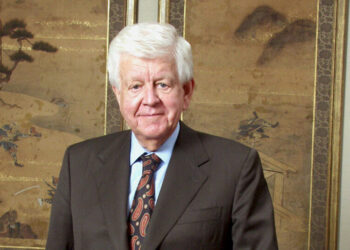Nestlé’s CIO says the value of the food giant’s AI investments goes well beyond efficiency
When Chris Wright is asked about the efficiency gains he hopes to extract from artificial intelligence, the chief information officer...
Philip Yancey, Prominent Christian Author, Admits to Extramarital Affair
Philip Yancey, a prominent evangelical author known for his work on the Christian concept of grace, announced this week that...
Trump slashes ‘exorbitant’ pay for Defense contractor execs as production too ‘slow’
President Donald Trump said he was slashing the salaries of defense contractor CEOs until they speed up equipment production. In...
‘SNL’ alum Chris Redd gets candid about ‘pill issues,’ dating Kenan Thompson’s ex-wife
Former “Saturday Night Live” cast member Chris Redd is ready to be more open and vulnerable in 2026. He committed...
4 of the best and 4 of the worst outfits at the 2026 Palm Springs International Film Festival
Kate Hudson at the 2026 Palm Springs International Film Festival. Taylor Hill/Getty ImagesThe Palm Springs International Film Festival is being...
Scientists Discover Oldest Poison, on 60,000-Year-Old Arrows
Today it seems obvious: Dip a sharp object in a poisonous substance, and then use that weapon to take down...
What’s Going on With Smart Rings?
If you’ve been following last year’s smart ring drama, you may have seen that the number of health-tracking rings you...
The typical American plan to study for 22 years and work for 40 ‘is broken,’ VC CEO says. Thanks to AI, employees can’t coast after graduation anymore
Top consulting and venture capital leaders say the idea learning ends after college is outdated in today’s AI-driven economy. While...
Opinion: Five Years Later, It’s Clear Jan 6 (and Trump) Broke America
I was napping when they broke into the Capitol. My wife, Martha, woke me to tell me the news. At...
Bruce Crawford, Arts-Loving Adman Who Led the Met Opera, Dies at 96
Bruce Crawford, an opera-loving advertising executive who left Madison Avenue to manage the Metropolitan Opera from 1986 to 1989 and...














